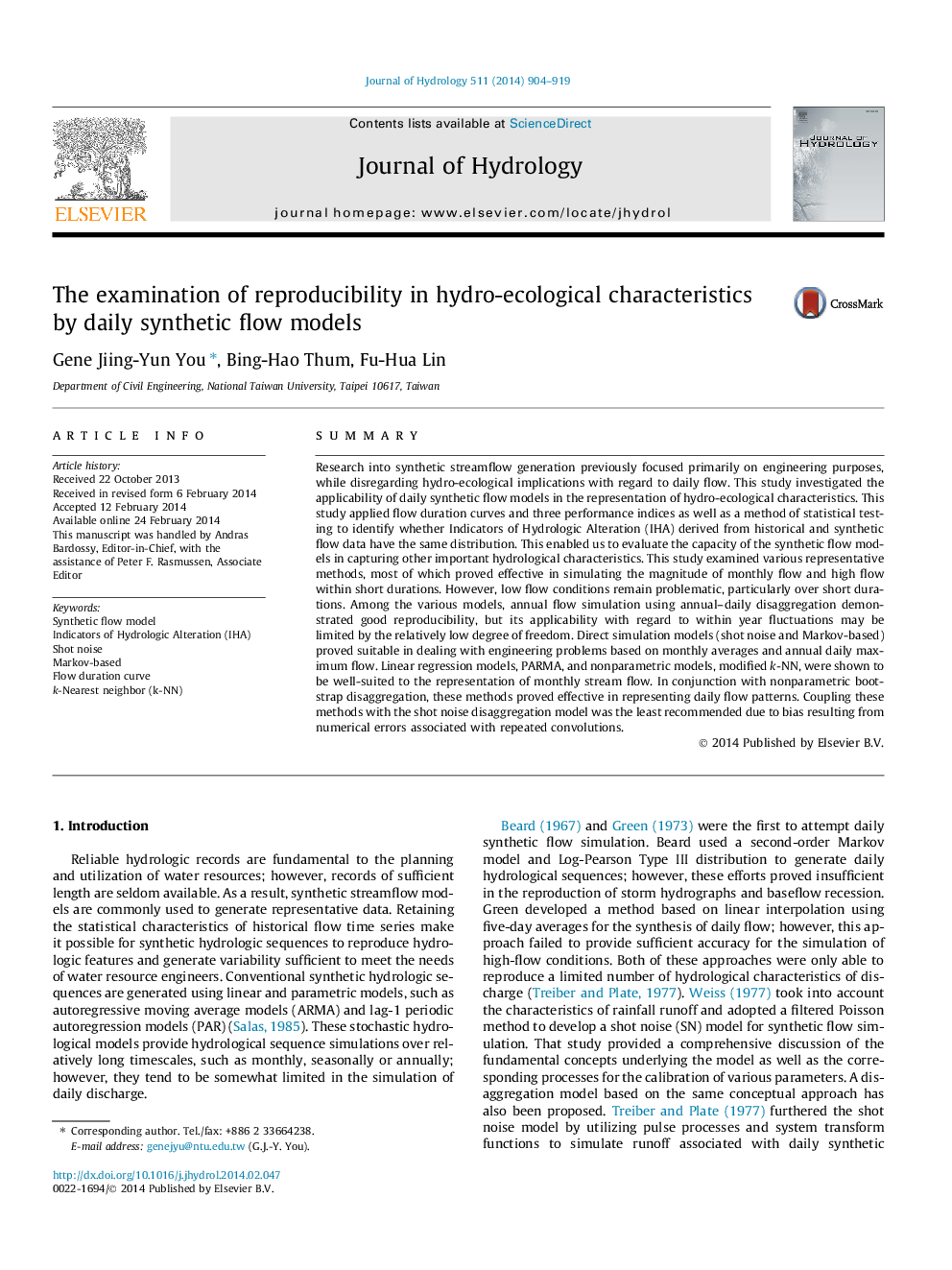| Article ID | Journal | Published Year | Pages | File Type |
|---|---|---|---|---|
| 6413377 | Journal of Hydrology | 2014 | 16 Pages |
â¢We examined the reproducibility of daily synthetic flow models.â¢A method is proposed using statistical tests and IHA to test the reproducibility.â¢The capacity of models in representing flow region has been validated.
SummaryResearch into synthetic streamflow generation previously focused primarily on engineering purposes, while disregarding hydro-ecological implications with regard to daily flow. This study investigated the applicability of daily synthetic flow models in the representation of hydro-ecological characteristics. This study applied flow duration curves and three performance indices as well as a method of statistical testing to identify whether Indicators of Hydrologic Alteration (IHA) derived from historical and synthetic flow data have the same distribution. This enabled us to evaluate the capacity of the synthetic flow models in capturing other important hydrological characteristics. This study examined various representative methods, most of which proved effective in simulating the magnitude of monthly flow and high flow within short durations. However, low flow conditions remain problematic, particularly over short durations. Among the various models, annual flow simulation using annual-daily disaggregation demonstrated good reproducibility, but its applicability with regard to within year fluctuations may be limited by the relatively low degree of freedom. Direct simulation models (shot noise and Markov-based) proved suitable in dealing with engineering problems based on monthly averages and annual daily maximum flow. Linear regression models, PARMA, and nonparametric models, modified k-NN, were shown to be well-suited to the representation of monthly stream flow. In conjunction with nonparametric bootstrap disaggregation, these methods proved effective in representing daily flow patterns. Coupling these methods with the shot noise disaggregation model was the least recommended due to bias resulting from numerical errors associated with repeated convolutions.
